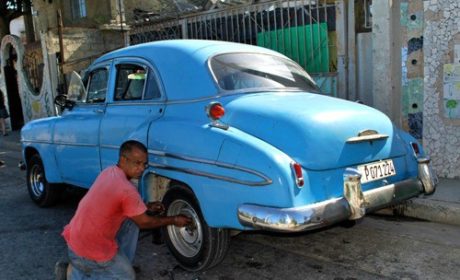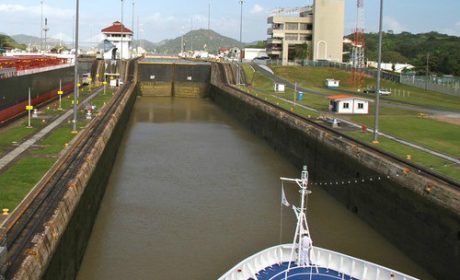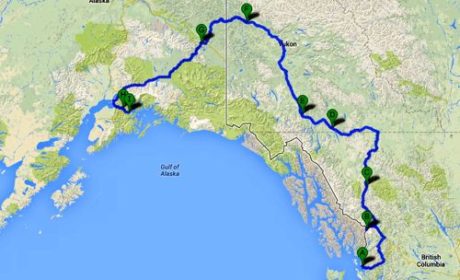As Cuba continues to open to American travelers, there is a growing sense of excitement, intrigue, and mystery about the small Caribbean island. After years of forbidden travel, explorers are chomping at the bit to explore Cuba, and with good reason. Travel photographer, Dennis Calhoun, visited Cuba recently and is here to tell us all about this beautiful country, which he considers “misunderstood, mistreated and still a mystery.”
History
Cuba has been through many invasions and certainly has had it’s ups and downs. The Spanish controlled Cuba long enough that the Spanish influence is very present even today in many of the cities and towns.

In modern times Batista was the dictator when the Castro brothers were young. American companies controlled much of Cuba (perhaps 60% of the island) and union workers earned a good living. But things were not good for everyone in Cuba. Large portion of Cuban citizens suffered under severe poverty.
The Castro brothers spent years planning and carrying out the revolution that deposed Batista (By 1958, the American Government had become dissatisfied with Batista as well). In January 1959, Batista fled the country and Fidel Castro took over.

As Batista fled Cuba, so did thousands of wealthy and middle class Cubans who were friends or sympathetic with Batista. Most of them came to Florida. Castro kicked the American companies out of Cuba and took the land and operations back for Cuba. The US Government was not happy. Partly because Castro brought a socialist form of governing into place in Cuba and partly influenced by the Cubans in Florida, the US decided to get rid of Castro.
In 1961, the US Government tried a CIA developed plan to invade Cuba and overthrow the Cuban government. he invasion at the Bay of Pigs failed. The US Government imposed an embargo against Cuba that is still in place today.
Life in Cuba
The socialist approach of Fidel Castro brought government control of business, health care, food and farming and education. Workers make low wages in government jobs and nearly everyone has a government job. Cuban people do not have a lot of luxuries. They do have excellent, free health care. They have access to excellent, free education all the way to the PHD level. They have access to low cost housing and low cost rationed food. If the rationed food does not last the entire month, they can buy more food, but they must pay higher prices for the non-rationed foods.
Because of the embargo, Cuba could only trade with Venezuela and Russia for tractors, farming supplies, cloths, food and other items. In the 1980’s, after the collapse of the Russian federation, Cuba suffered through several years of poverty. People lost weight, suffered, but learned to change from big farms to smaller, organic farms. After a while the organic farming paid off and the Cuban economy improved.
After 2008, Raul Castro took over for Fidel and began to allow private businesses to start up. Cuba finally realized that tourism was a good way to increase income and improve the lives of the Cuban people.
Cuba has produced many highly qualified medical doctors and has been sending doctors throughout Latin America and to other parts of the world during disasters and times of crisis.
My impressions of Cuba
To travel to Cuba, Americans must abide by the US Government’s rules. Travel must be approved and is only allowed on a people-to-people basis (this is a cultural exchange program). Americans (unlike Europeans and Canadians) cannot visit Cuba to go to the beach resorts. This will not change until Congress lifts the embargo. You must keep records (for five years) of your visit, including a journal of where you went and who you met.

On my visit, we met artists, dancers, fishermen, cafe owners, taxi drivers, businessmen, mechanics, musicians and singers, and one group of school children. Our visit was not restricted to Havana; we traveled most of the island.
Our bus was very comfortable and had plenty of room for luggage. Carry-on luggage must be small to fit in overhead bins or under your seat. Most rolling carry-on luggage will be too large to carry on the bus, however, it could be placed in the luggage hold. You will only have access to it at overnight stops.
The people in Cuba have representatives in the government. They have access to WIFI and the internet with no censoring. Although it’s not available in their homes, it is available in the town square and city squares in the big city.

Those who work in government jobs have low wages. Those involved in tourism seem to make more money. Private business owners also make more money.

The people we met and the people we saw on the streets seemed happy. Most Cubans have TVs, washing machines and stoves. Furniture is limited and cheap. The Cuban people are very kind, friendly, helpful and outgoing. We saw very little homelessness.
Transportation for Cubans is by car, bike, motorcycle, bus, horse, buggy, pedal taxi and walking. There are also horse drawn wagons and trucks.

Hotels range from excellent to not-so-good. There are enough hotels to meet the current demand of tourism, but as tourism increases, more hotels will be needed. Cafes and paladars (privately owned eating establishments) are plentiful. Some are great and some are just good.

Our hotels were very good, with one exception. American money cannot be used (this may be changing in the near future). Credit cards are not accepted (this also could change). American cell phones do not work in Cuba (Verizon may be the exception, but that is not for certain).

As American visitors, we were treated well, and experienced no restrictions. Cuba is an interesting mix of old and new. However, it does have that feeling of going back in time. Life is more like it was in the 1930’s and 1940’s in rural areas, and like the 1960’s in larger towns.
Photos by Kathy and Dennis Calhoun.
Are you planning a trip to Cuba now that travel has opened up? Come join the conversation at the My Itchy Travel Feet page on Facebook. Or send us an email with your thoughts.



